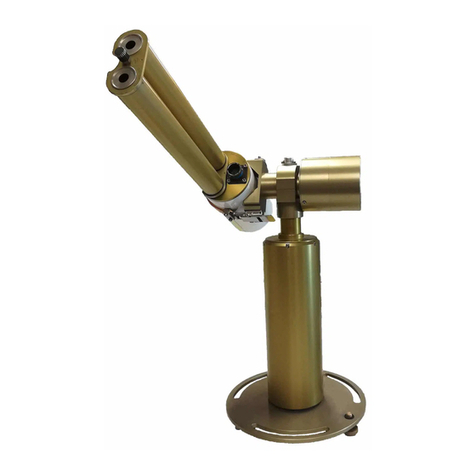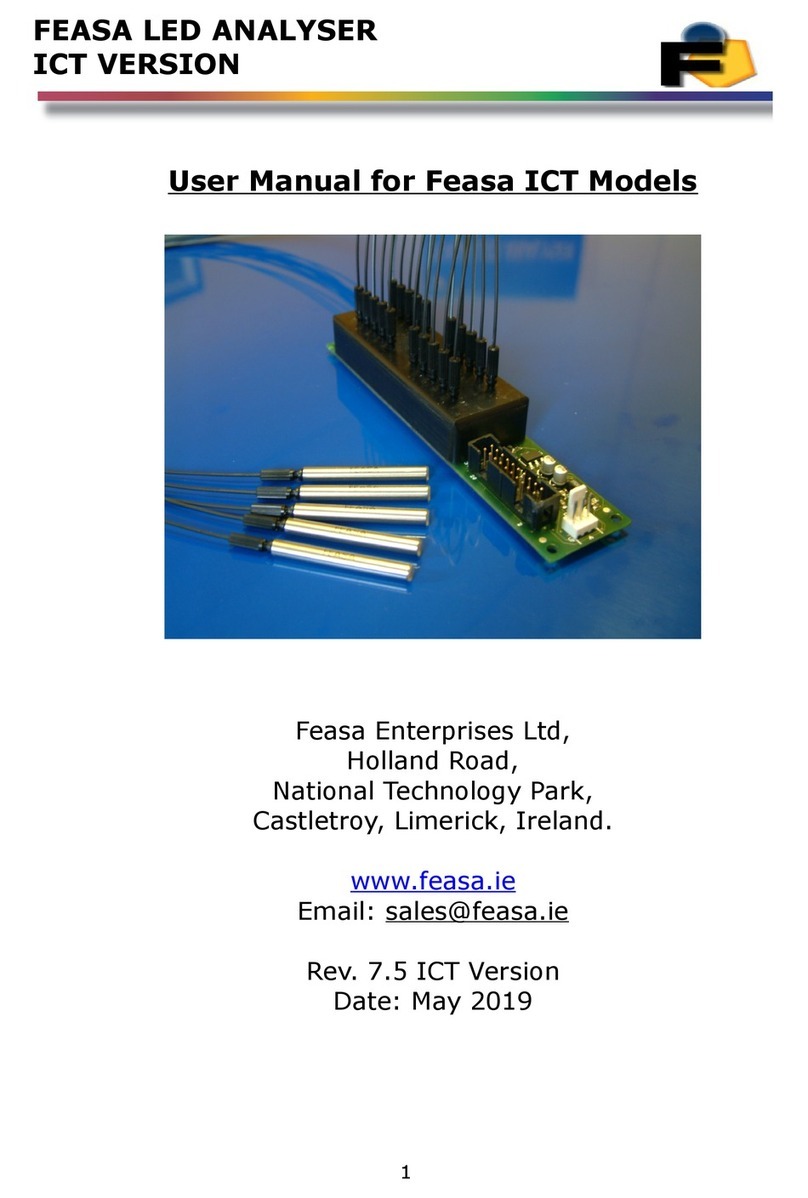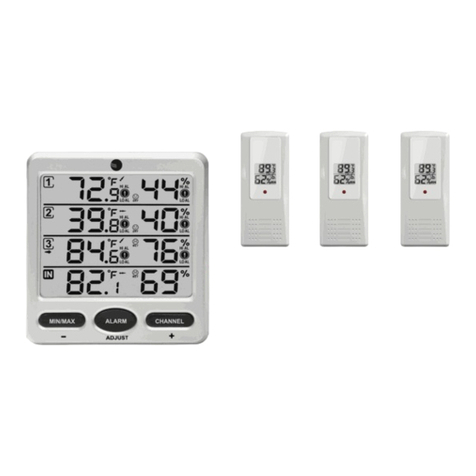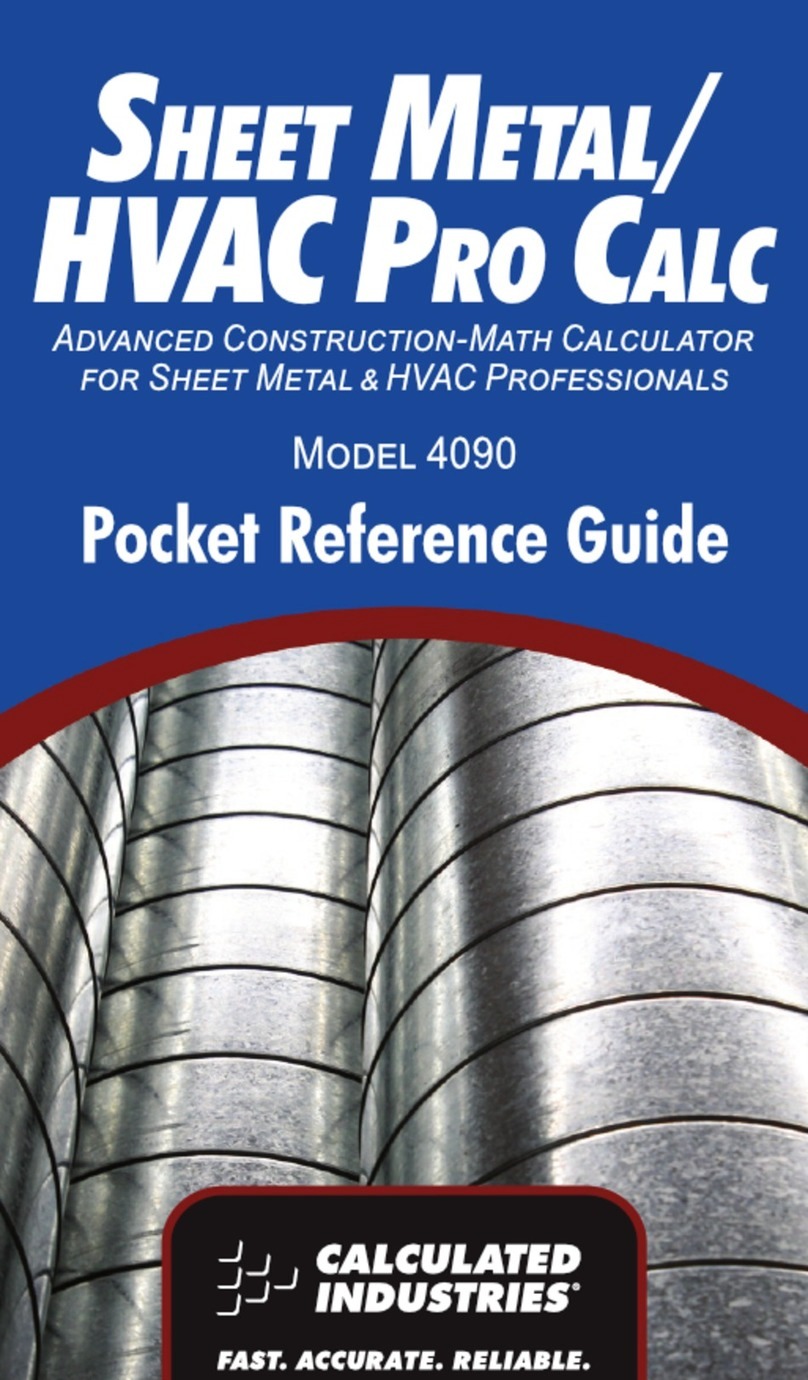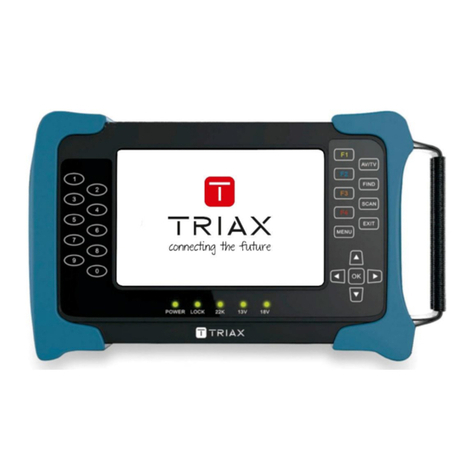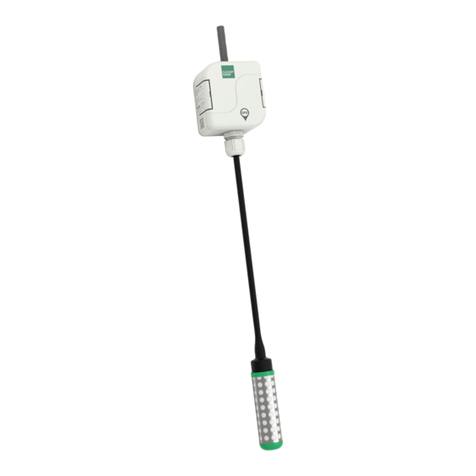Cimel CE318-T User manual

Multiband photometer CE318-T
User’s Manual (rev. October 2021)

CE318-T Photometer
User Operation Manual
Revision V4.10 October 2021
1
Dear Customer and users,
You have just purchased a Cimel photometer CE318-T and wewould like to thank you.
The CE318-T is the most recent model of the well-known Cimel CE318 photometer.
This model is available and recommended to all users that intend to operate it in a
network, such as AERONET, CARSNET or SONET.
We have placed in this instrument all our passion and know-how so that it best meets
your needs. Innovation and performance: we designed it so that it is always easy to
use.
In the line of Cimel products, you will also find a wide range of remote sensing
instruments like the Cimel LiDAR CE710 and CE376 automatic aerosol LiDARs.
Of course, in an ongoing effort to satisfy your demands as best as possible concerning
our products, our after-sales service department is at your disposal and ready to listen
and answer to all your questions and suggestions (contact information at the end of
this booklet).
Please visit our website at www.cimel.fr : you will find all our products, as well as
additional and useful information.
As part of our commitment to constantly improve our products, we reserve the right to
make changes totheir technical,functional and/or esthetical properties inline with their
technological development.
Caution: Before installing and using your instrument, please read carefully this
guide, which will help you to quickly familiarize yourself with its operation.
Please read also carefully the preventive maintenance that has to be done
weekly and yearly on the CE318-T.

CE318-T Photometer
User Operation Manual
Revision V4.10 October 2021
2
Table of Contents
1Product overview............................................................................................... 4
1.1. Presentation........................................................................................................... 4
1.2. System components quick description................................................................... 5
1.3. Sensor head types............................................................................................... 13
1.4. Data transmission................................................................................................ 15
2Installation ....................................................................................................... 15
2.1. Installation site recommendations........................................................................ 15
2.2. Hardware installation and setup........................................................................... 15
Needed tools ...............................................................................................................16
Tripod mounting...........................................................................................................16
Case mounting ............................................................................................................18
Robot and sensor head mounting ...............................................................................19
Optional pyranometer global radiation sensor ............................................................28
2.3. Communication protocol installation and setup.................................................... 29
RS232 communication ................................................................................................29
USB communication....................................................................................................30
Communication over GPRS ........................................................................................31
Satellite transmission installation and configuration....................................................36
2.4. Control Unit firmware update................................................................................ 42
3Control Unit navigation menu ........................................................................ 42
3.1. Capacitive key functions ...................................................................................... 42
3.2. Switch on / Switch off / Standby........................................................................... 42
3.3. Menu description.................................................................................................. 43
3.4. SCENARIOS........................................................................................................ 43
3.5. MEASURES......................................................................................................... 45
3.6. MEMORY............................................................................................................. 45
3.7. SETTINGS........................................................................................................... 46
3.8. DATE................................................................................................................... 48
3.9. CIMEL.................................................................................................................. 48
3.10. INFO.................................................................................................................... 49
4General description of the scenarios and their sequence........................... 49
4.1. Scenario description and sequencing................................................................... 49
4.2. Group of measurement scenarios........................................................................ 59
4.3. Day and night measurement schedule in Auto mode ........................................... 60
Standard (CE318-TS9) and polarized (CE318-TP9)...................................................60
BRDF (CE318-TU9) and BRDF 12 filters (CE318-TU12)...........................................62
SEAPRISM (CE318-TV12)..........................................................................................62
Polarized (CE318-TP9) ...............................................................................................62
4.4. Execution time of scenario................................................................................... 63
5On-site maintenance....................................................................................... 64
5.1. Weekly check preventive maintenance................................................................ 64
5.2. Corrective maintenance....................................................................................... 65
Solar panel and wet sensor replacement....................................................................65
Robot levelling adjustment ..........................................................................................67
Flash memory formatting.............................................................................................68

CE318-T Photometer
User Operation Manual
Revision V4.10 October 2021
3
6Factory calibration and maintenance............................................................ 69
6.1. Sensor head calibration and maintenance ........................................................... 69
Calibration ...................................................................................................................69
Maintenance................................................................................................................69
6.2. Robot maintenance.............................................................................................. 70
7Troubleshooting.............................................................................................. 70
7.1. Communication and data transfer is down ........................................................... 70
Using serial port transfer protocol ...............................................................................70
Using satellite transmitter............................................................................................71
7.2. Robot errors......................................................................................................... 71
7.3. Battery low........................................................................................................... 72
7.4. GPRS –communication errors............................................................................. 72
GPRS errors................................................................................................................73
FTP communication errors..........................................................................................74
HTTP(S) communication errors...................................................................................74
8Frequently Asked Questions (FAQ)............................................................... 74
9Technical specifications................................................................................. 76
9.1. General................................................................................................................ 76
9.2. Dimensional drawings.......................................................................................... 77
10 After-Sales Service and Customer Relations................................................ 85
11 Annexes ........................................................................................................... 86
11.1. Packing List ......................................................................................................... 86
11.2. AERONET network (FAQ) ................................................................................... 88
What is the AERONET network? ................................................................................88
How to enter it? ...........................................................................................................88
What to do when there is a “Bad sun tracking”? .........................................................88
What to do when there is a “InGaAs / silicon discrepancy”?.......................................89
What to do when there is a “High dark current”? ........................................................89
What to do when there is constant humidity? .............................................................90
What to do with a dissymmetric Almucantar? .............................................................90

CE318-T Photometer
User Operation Manual
Revision V4.10 October 2021
4
1 Product overview
1.1. Presentation
This high-precision photometer for observing networks measures the optical properties
of the atmosphere especially by measuring on one hand, the sun and moon irradiance
and on the other hand the sea, soil and sky radiance. It provides the quantification and
physical-optical characterizations of the aerosols.
Due to its very low power consumption thanks to the MicroAmps®technology, to its
self-powered system and to its rugged design, the CE318-T fully meets the operational
requirements of continuous monitoring in terms of reliability, long lifetime and very low
maintenance cost.
The CE318-T photometer technology is constantly enhanced to match the new
technological challenges for climate observation and monitoring. Cimel’s photometers
are the benchmark devices for most aerosol observing networks and more specifically
for the international federation of AERONET.
The large range of parameters that are derived and calculated from the measurements
and from the atmospheric physics equations make the CE318-T photometer a
worldwide benchmark device for the following applications:
•Characterization and quantification of aerosols
•Satellite calibration of aerosol measurements
•Detection of volcanic ashes plumes in real time
•Determination of Aerosol Optical Depth
•Determination of fine mode and coarse mode AODs
•Determination of the optical properties of the atmosphere for satellite imaging
•Determination of the ocean's color
•Determination of the amount of precipitable water vapor
•Air quality monitoring
•Volume size distribution
•Nature of aerosols

CE318-T Photometer
User Operation Manual
Revision V4.10 October 2021
5
1.2. System components quick description
The photometer system is delivered with:
1. Control Unit (CU)
The Control Unit is the component that received all the data acquired by the optical
head and it is used as the user interface to parameterize the whole system running.
The CU can transmit the data using different communication protocols (see chapter
1.4 for detailed information).
The CU gets four keys, a yellow push button and a screen display which enable the
users to navigate through the menus.
The features and the menus are described more precisely in chapter 3.
User interface:
1: Graphic display.
2: Capacitive keys.
3: Mechanical push button.
Removable terminal block:
4: Pyranometer.*
5: Wet sensor.
6: Remote display.
7: SDI12.
8: USB.
9: Sensor head.
10: Robot azimuth and zenith
motion.
11: DCP / Serial communication.
12: Solar panel.
13: External battery.
Other:
14: GPS antenna.
15: GSM antenna.
16: Short range radio antenna.**
* Refer to the chapter 0 The .
** Firmware for short range radio should be available in 2022.
L
G
R

CE318-T Photometer
User Operation Manual
Revision V4.10 October 2021
6
2. Sensor head and collimator
a. The sensor head
The sensor head measures the received signal from the sun, sky, soil or sea. Then it
is sent and recorded to the CU.
Detectors can be either silicon and. InGaAs detector is used for near-infrared
wavelengths.
1: Front plate lenses and optical chambers
entrance (a: Silicon / b: InGaAs)
2: 4-quadrant detector lens
3: Cover
4: Threaded hole for collimator
5: Positioning notches
6: Head sensor cord connector
7: Step by step motor
8: Detectors
9: Filter wheel detector
10: 4-quadrant
11: Optical chambers
12: Filter wheel carter

CE318-T Photometer
User Operation Manual
Revision V4.10 October 2021
7
b. Collimator
The collimator is a component that enables the light to be guided correctly to the
sensor head outside lenses. The collimator helps to reduce the stray light.
1: notch 2: tightening screw 3: alignment hole 4: spot
3. Robot
The robot is the component on which the sensor head is attached. Its mechanical
design enables it to point on whole directions of the sky on the azimuthal and polar
(zenith) angles with a very high accuracy.
It is controlled through 2 cables (with RJ11 connectors), one for each axis.
1: adjustment wheel (X2)
2: robot base
3: strap
4: V-shaped part and
positioning notches
5: spirit level

CE318-T Photometer
User Operation Manual
Revision V4.10 October 2021
8
4. Tripod and tray
The tripod is the supplied infrastructure where the protection case and the robot are
fixed and that enables the whole system to be stably fixed on the ground.
The tray is a part fixed horizontally on the tripod and where the robot will be fixed on.
1: emplacement for the protection case
2: tray
3: tripod feet

CE318-T Photometer
User Operation Manual
Revision V4.10 October 2021
9
5. Protection case with solar panel
In order to isolate the CU and the batteries from external conditions they must be
placed inside the weatherproof case. The solar panel that powers the system is
incorporated in the case. The output plug of the solar panel is a RJ11 connector.
1: Cable gland. The wet sensor and solar panel wires will go through.
2: Cable gland. The robot and computer wires will go through
3: Cap. The sensor head cord will go through
4: Foam
5: Solar Panel
6: Wet sensor

CE318-T Photometer
User Operation Manual
Revision V4.10 October 2021
10
6. Wet sensor
The wet sensor detects rain in order to stop measurements and protect the sensor
head from water when it is raining. The output plug of the sensor is a RJ11
connector. Standard length of the wire is 3m.
7. Sensor head cord
The sensor head cord connects the CU and the sensor head. The standard length is
3 meters. One side connector is DB15 (male) type and this other side is Jupiter type
with 22 pins (female)

CE318-T Photometer
User Operation Manual
Revision V4.10 October 2021
11
8. Batteries and charger
The black batteries supply power to the CU. The battery is 8AH.
The YUASA battery is furnished when the satellite transmitter is used. The battery is
24AH.
The Mascot 2240 battery charger is provided in case of powering the device through
mains.
9. Fly case
10.PhotoGetData software
PhotoGetData is the software used to communicate from the acquisition PC to the
CU. PhotoGetData is not needed when using data transfer by satellite
communication protocol. Read the associated documentation delivered with the
photometer.
PhotoGetData software is available on www.cimel.fr website in the download section.

CE318-T Photometer
User Operation Manual
Revision V4.10 October 2021
12
11.Satellite transmitter (optional)
The satellite transmitter is useful in remote places where no reliable PC is available.
It enables sending the data directly to an appropriate geostationary satellite which
has a dedicated transmission channel for the CIMEL photometers.
1: Solar Panel Solartek
2: YAGI antenna
3: Mast

CE318-T Photometer
User Operation Manual
Revision V4.10 October 2021
13
1.3. Sensor head types
6 different sensor head types exist:
•Standard / CE318-TS9: It uses 340, 380, 440, 500, 675, 870, 937, 1020 and
1640 nm filters (Fig.1).
•Polarized / CE318-TP9: A filter wheel containing 3 sets of 3 polarizers
operating in infrared (POL1), Ultraviolet (POL2), and visible (POL3) and which
are orientated with a 120° angle is added on top of the wheel containing the
Standard filters. Additional information about the aerosols nature and shapes
can then be retrieved (Fig.2).
•BRDF / CE318-TU9: it uses 380, 440, 550, 675, 740, 870, 937, 1020 and
1640 nm filters (Fig.3).
•BRDF 12 filters / CE318-TU12: It is designed for satellite calibration. It uses
415, 440, 490, 555, 675, 702, 740, 782, 870, 937, 1020, 1640 nm filters
(Fig.4).
•Ocean Color (OC) 12 filters / CE318-TV12-OC / SeaPRISM: It uses 400,
412.5, 442.5, 490, 510, 560, 620, 665, 779, 865, 937, 1020 nm filters (Fig.5)
•Lake Color (LC) 12 filters / CE318-TV12-LC:It uses 412.5, 442.5, 490, 510,
560, 620, 665, 681, 709, 865, 937, 1020 nm filters (Fig.6)
The sensor head types differ in the presence of an additional wheel filter containing
polarizers for the Polarized type, the filters wavelengths mounted in the head sensor,
and the scenario sequence established.
Filter wavelengths are defined in the UV-visible-IR spectrum according to scientific
retrieval purposes.
The filters and polarizers curves are delivered with the photometer.

CE318-T Photometer
User Operation Manual
Revision V4.10 October 2021
14
Figure 3 : POLARIZED type (CE318-TP9)
VIS
UV
IR
Figure 4 : BRDF 12 filters type
(CE318-TU12)
Figure 6 : Lake Color 12 filters
(CE318-TV12-LC)
Figure 5 : Ocean Color 12 filters
(CE318-TV12-OC)
Figure 2 : BRDF Type (CE318-TU9)
Figure 1 : Standard type (CE318-TS9)
490 nm
440 nm
415 nm

CE318-T Photometer
User Operation Manual
Revision V4.10 October 2021
15
1.4. Data transmission
The photometer can use 4 different communication protocols to send its data from the
CU.
•PC data transfer using a RS232 link to an acquisition PC. (Default data
transmission). The PC is not provided.
•Satellite data transfer using a DCP transmitter module. The proper way to set
the module is explained in the Installation chapter.
•USB link for punctual connections.
•Communication over GPRS.
2 Installation
2.1. Installation site recommendations
The site should be chosen carefully in order to comply with the following conditions:
•Easy access to facilitate the weekly maintenance of the device.
•The device should be installed in a clear area where it has the largest possible
field of view so that it can track the sun from sunrise to sunset (no buildings,
trees, cables…).
•Less than 100m cable distance to a PC (for RS232 link connection).
•A support where it can be strongly fixed so that the system is stable
(preferably the tripod).
2.2. Hardware installation and setup
In this description, notions on how to manually control the photometer via the CU are
necessary, it is recommended to read chapter 3 and 4 to have a better overview of
what is done when installing the system.
However, the following instructions are detailed enough so that it is not mandatory to
read the 2 chapters cited above.
If the tripod system is not used, skip to part 2.2.4.

CE318-T Photometer
User Operation Manual
Revision V4.10 October 2021
16
Needed tools
To install the system, the following tools are needed:
•Open-end wrench size 10.
•Open wrench size 13.
If possible, a tubular spirit level will be used in addition of the robot spirit level to make
the installation easier (0.4mm/m accuracy).
Tripod mounting
The tripod mounting system is designed for easy installation of the photometers in most
site conditions.
1. Insert the three photometer tripod feet into the metallic frame.
2. Tight the 3 screws on the tripod feet.
3. Insert the ribs into the slides designed for this.
4. Insert the screw into the tray.
5. Tight strongly the screw into the rib with the tray in between.

CE318-T Photometer
User Operation Manual
Revision V4.10 October 2021
17
6. Attach the tripod feet to the ground with appropriate screws.
Note: Orientate the protection case emplacement South if the location is in the
Northern hemisphere or North if the location is in the Southern Hemisphere.

CE318-T Photometer
User Operation Manual
Revision V4.10 October 2021
18
Case mounting
7. Insert the 4 ribs into the metallic frame in order to fix the case.
8. Tight strongly the screw into the ribs with the inside of the case in
between.
9. Put the foam at the bottom of the case and on the sides, place the
batteries and the CU as shown on the picture below.

CE318-T Photometer
User Operation Manual
Revision V4.10 October 2021
19
Robot and sensor head mounting
10.Put the screws into white plastic part.
11. Put the screws on the holes through the robot base but don’t tight them
to the end, let a 2 or 3 cm backlash so that the levelling that is done in
the next part is easier to do.
12.Connect AZ (robot AZimuthal motor), ZN (robot Polar motor), solarpanel,
and wet sensor and battery wires to the removable terminal block of the
CU passing them going through the cable glands of the protection case.
Other manuals for CE318-T
2
Table of contents
Other Cimel Measuring Instrument manuals
Popular Measuring Instrument manuals by other brands
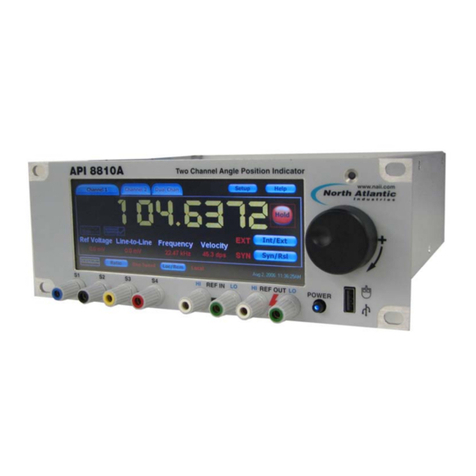
North Atlantic
North Atlantic 8810A Programmer's reference guide
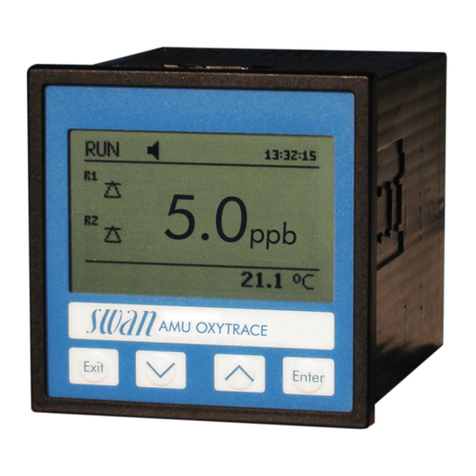
Swan Analytical Instruments
Swan Analytical Instruments AMU Oxytrace Operator's manual
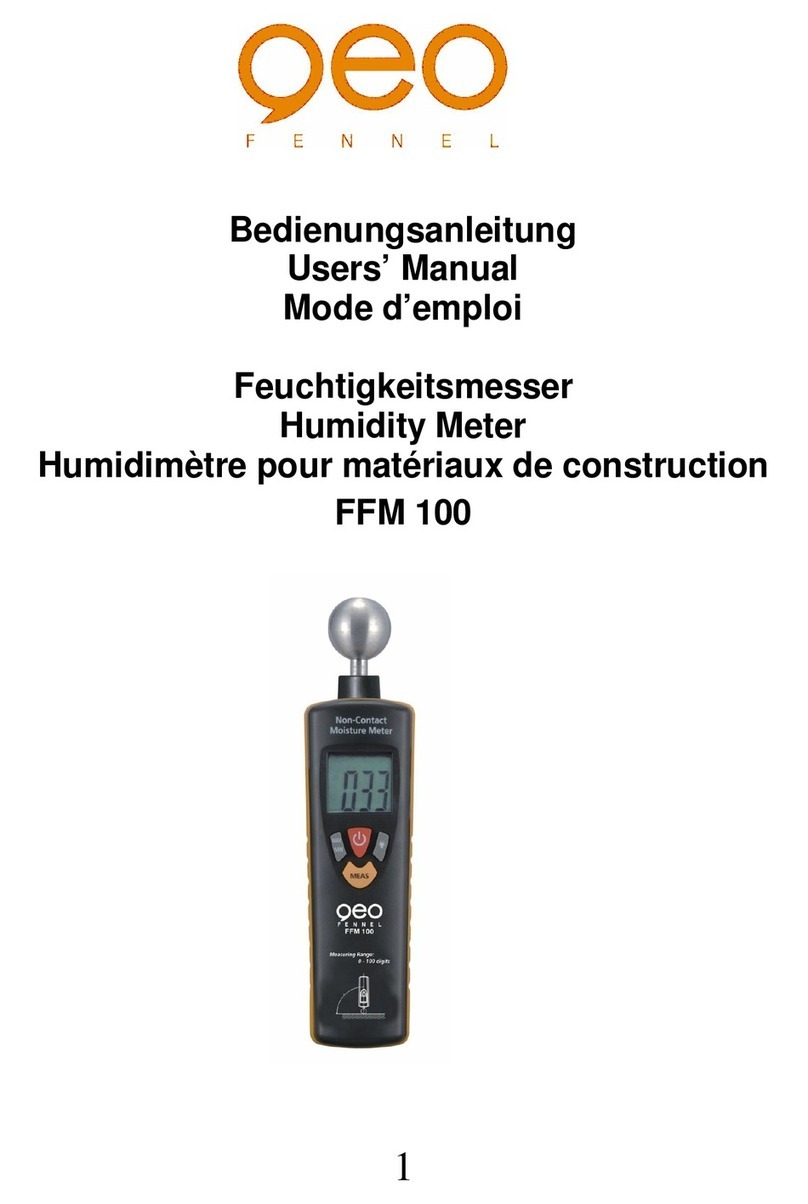
QEO
QEO FFM 100 user manual

Hanna Instruments
Hanna Instruments Combo Grochek HI 991404 user manual
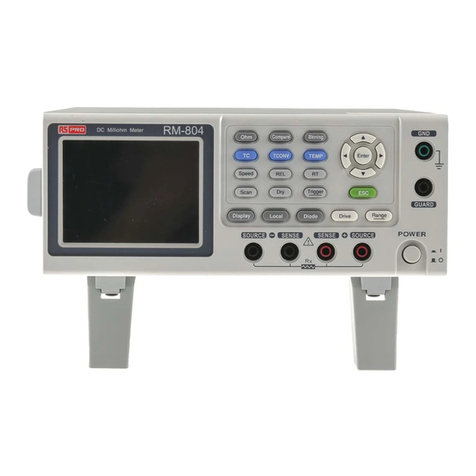
RS PRO
RS PRO RM-804 instruction manual

ASTECH
ASTECH VLM500-DG user manual

Endress+Hauser
Endress+Hauser RIA46 Brief operating instructions

Tektronix
Tektronix TIVH Series user manual

Krautkramer
Krautkramer DynaPOCKET Technical Reference and Operating Manual
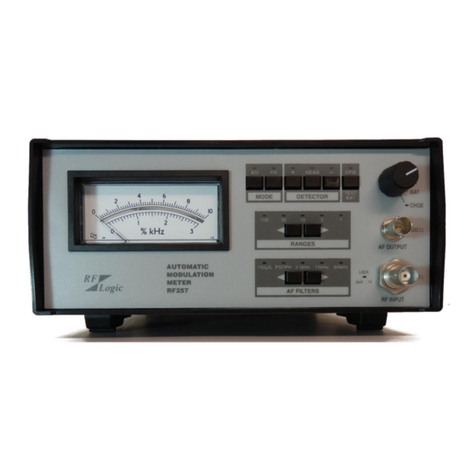
RF Logic
RF Logic RF257 Service manual

Kramp
Kramp KRED-KA user guide
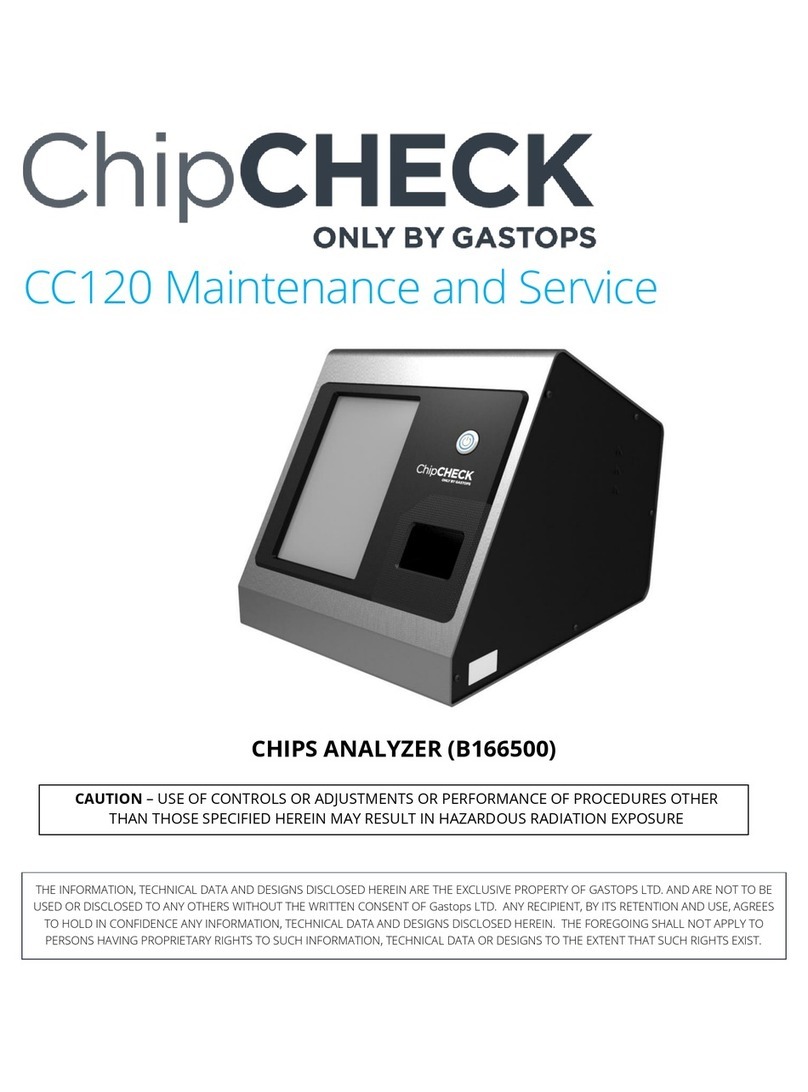
Gastops
Gastops ChipCHECK CC120 Maintenance and service manual

